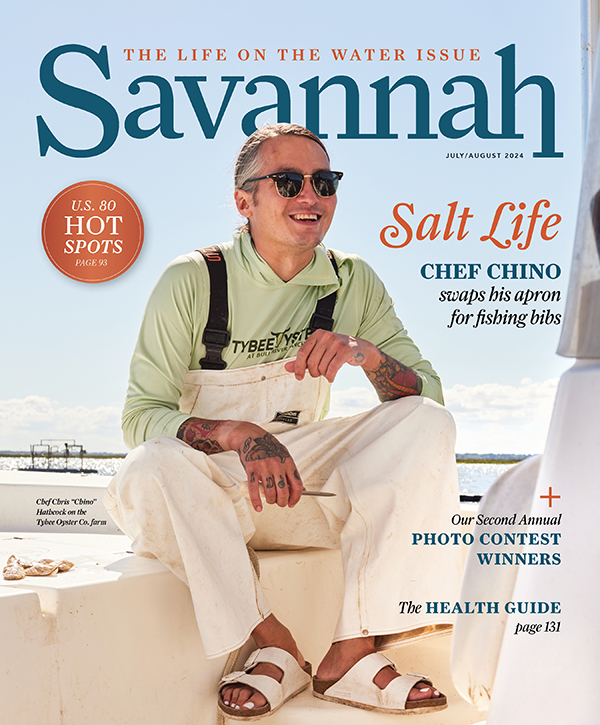The “Mount Everest of sailing” started as a bet — and became a phenomenon
Photography by MALCOLM TULLY
Editor’s Note: The Worrell 1000 2024 came to a close May 24 in Virginia Beach. The next race is in 2026.
IT BEGAN AS A BAR BET between brothers. In 1974, lifeguards-turned-proprietors Michael and Chris Worrell were in their popular Virginia Beach night spot and eatery, Worrell Brothers Restaurant and Raw Bar, when the discussion of sailing a 16-foot catamaran from Virginia to Florida arose. Chris declared it impossible. Not only is a 16-foot catamaran a small craft with not much separating sailor from sea, but this was also a particularly treacherous stretch of coastline (the Coastal Carolinas, after all, are known as the graveyard of the Atlantic). Still, Michael bet his brother he could do it.


Michael, along with his crewman, Steve McGarrett, set sail for Florida on his 16-foot Hobie Cat. They sailed for 20 days and through two hurricanes.
“Eventually,” says Tybee Islander Chuck Bargeron, a race official and director of research and development for the Worrell 1000, “they got all the way down to Fort Lauderdale, where the boat just literally fell apart. They’d been holding it together with everything they could.”
When Michael returned home, Chris told him the phone had been ringing off the hook with reporters. The entrepreneurial brothers realized they were onto something.
Almost 50 years later, the Worrell 1000, named for the roughly 1,000 miles of coastline, is considered the Mount Everest of sailing. It’s America’s most grueling sailing race, and one that draws teams from across the globe. Today, because the prevailing winds blow south to north, the race begins in Hollywood, Florida, and ends at Virginia Beach, Virginia — for those who make it that far.
“When you see these teams, they’re not dressed for a sail,” Bargeron says. “They’re dressed for survival.” Over the years, there have been broken limbs, broken ribs and many broken boats, “but no lives lost, thankfully,” he says reverently.

before setting sail again.
On May 15, anyone who was lucky enough to be on Tybee Beach near 14th Street got to witness the fleet of catamarans as they embarked upon the sixth leg of the race: Tybee Island to Folly Beach, South Carolina. There were 13 Formula 18 class sport catamarans (called F18s) in all, ranging from Team Outer Banks to Team Netherlands to the eventual winner, Team Australia. (There has been a Team Tybee Island in the past, but not this year.)
The race has gone through many iterations over the decades. Early on, there were three team members (two on the boat at a time), and they sailed continuously. “After 24 hours, one sailor would come off and another would come on, but they would sail day and night and end up doing the race in about four days,” Bargeron says.
As the race grew and began getting sponsors, the format became racing to one destination each day and then staying there overnight. Now, it is a 13-day race (12 legs plus a lay day on Tybee), with each race day beginning at 10 a.m. and sailors racing until they get to the day’s check point.
“When you see these teams, they’re not dressed for a sail. They’re dressed for survival.” — Chuck Bargeron, Worrell 1000 director of research and development

“It’s a Le Mans start off the beach,” explains Bargeron. “When the red flag comes down and the horn sounds, they all take off at the same time. Ground crews and the race officials then go to the next check point and set up what’s called the gate — two flags at the edge of the water creating an imaginary line. As the sailors come through that, we record their times.” Everyone is racing the clock, because the winner is determined by who has accumulated the least time by the end of the race.
The goal is to go fast, but carefully. And though no one wants a broken boat or bone, the mantra extends beyond self-preservation: Since the race’s beginnings, the Worrell 1000 has remained committed to environmental stewardship. Participants organize beach cleanups as they pass through each beach, and they help to mark and preserve sea turtle nests, following all the proper guidelines so as not to disrupt nesting and hatching (the race takes place during nesting season).
If you missed it this year, take heart and mark your calendars for the Worrell 1000’s 50th anniversary, coming to Tybee in May 2024. It’ll be worth the wait — you can bet on it.



